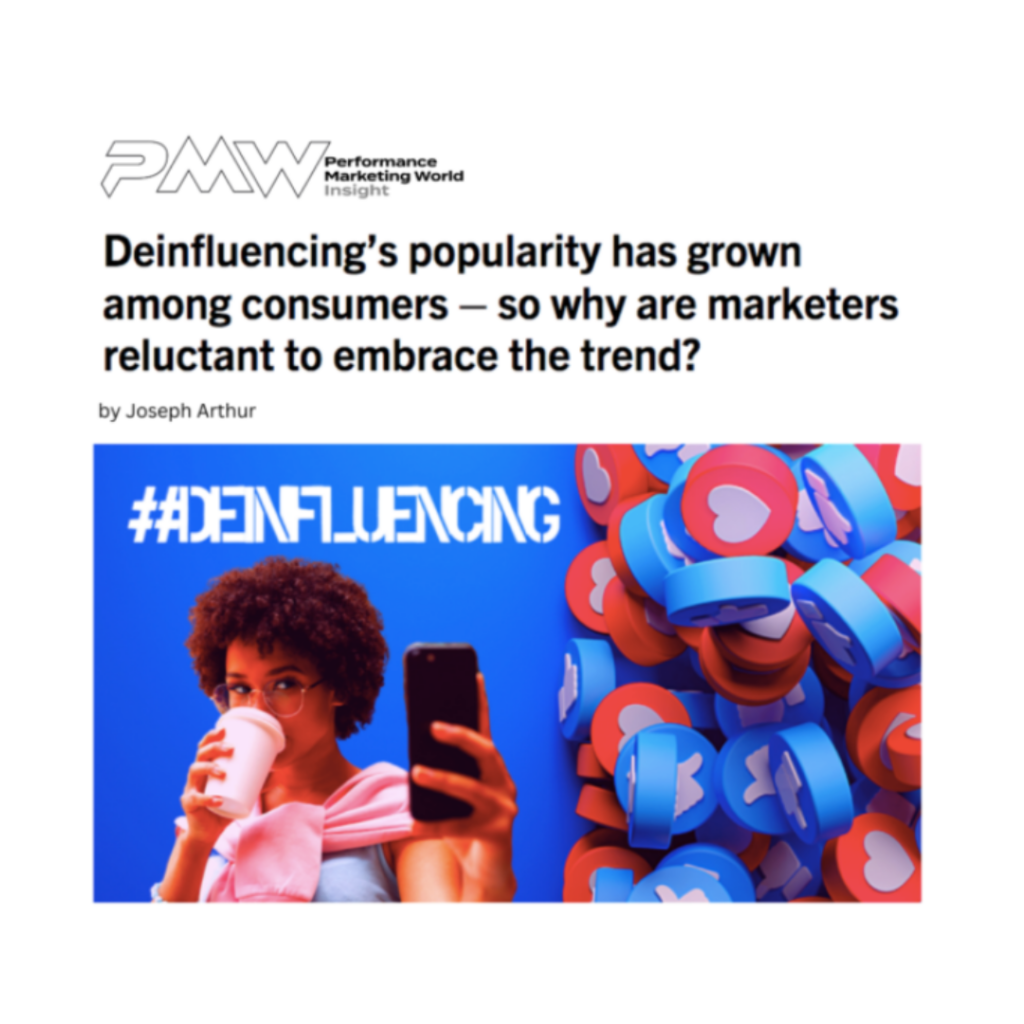De-influencing, where influencers discourage product purchases, challenges brands to choose authentic partners. Jenny Tsai from WeArisma advises using data analytics to assess influencer risk and ensure brand alignment to avoid backlash.

Published On: July 27, 2023
De-influencing is a new social media trend, which sees some influencers discouraging their communities from buying certain products. What are the implications for brands? How can they decrease the chances of de-influencing backlash?
WeArisma CEO, Jenny Tsai on the de-influencing trend:
“With so many social platforms and so much content to view, we naturally look to consume from and connect with people that are relatable, with whom we share a feeling, like-minded experiences, or an ideal. What marketers should be careful about is to not conflate relatability with true authenticity.”
“While consumers may want to see more vulnerable and authentic content, the trends of de- influencing and calling-out behaviour of influencers believed to be inconsistent with their personal brands shows that consumers still want these influential sources to live up to their personas. Macro trends such as the cost-of-living crisis and the climate emergency are also fuelling the rise of ‘de-influencers’, encouraging more responsible buying amongst consumers and holding brands to account.”
“This makes it critical for marketers to select the right partnerships that will not only achieve the desired results but also decrease the chances of de-influencing backlash. They can do this by using data analytics to capture and measure more sophisticated metrics such as influencer risk when it comes to identification, and as a result, ensure collaborations are brand aligned and brand safe – and that their budgets are spent effectively.”
Read the full article here.
Keep informed with the latest trends, reports, and case studies from the world of influencer marketing.

In 2025, influencer gifting has evolved from glossy PR packages to something much more meaningful: intentional, relationship-driven storytelling. Whether you’re a brand in beauty, fashion, tech, or wellness, the goal is the same – build real connections that drive advocacy, not just awareness.
That message resonated strongly during our recent Influencer Gifting & Seeding webinar, where we were joined by industry leaders Grace Fung, Influencer Marketing & Communications Lead at Coty, and Abigail, Talent Manager from Primark. They shared strategic insights into how their teams are evolving traditional gifting approaches to better align with shifting consumer expectations and brand objectives.

WeArisma’s Sports & Athleisure 2025 State of Influence Interactive Report – The Definitive Guide to Winning in Activewear Through Influencer Strategy
The athleisure market is no longer just about performance – community, authenticity, and cultural relevance now separate the leaders from the lagging heritage brands.
Our Sports & Athleisure 2025 State of Influence Report reveals how Gymshark, Tala, Adidas, and Nike are rewriting the rules of engagement – and how your brand can too.
Stay up to date with the latest industry trends and topics
Discover how WeArisma can help you harness the power in influence, grow your brand’s presence, and achieve measurable success.
WeArisma combines the power of AI, influencer marketing and social listening to deliver smarter, scalable strategies with real impact.